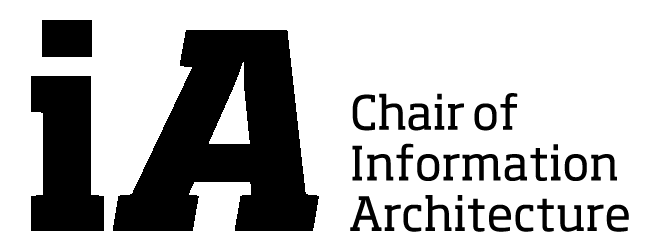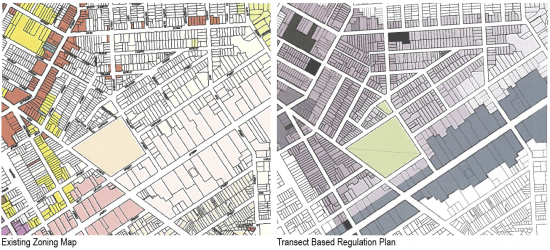One of the principles of Transect-based planning is that certain forms and elements belong in certain environments. For example, an apartment building belongs in a more urban setting, a ranch house in a more rural setting. Some types of thoroughfares are urban in character, and some are rural. A deep suburban setback destroys the spatial enclosure of an urban street; it is out of context. These distinctions and rules don’t limit choices; they expand them. This is the antidote for the one-size-fits-all development of today.
SmartCode v9.2
Submission till Midterm-Crit on Monday, Oct 31st 2011, 09:00 by uploading to the student server
– afp://schmitt-server.ethz.ch/schmitt-stud
– smb:\\schmitt-server.ethz.ch\schmitt-stud
Deliverables:
Please submit a separate inDesign package and .pdf documents of the SmartCode Catalog for Altstetten as well as some shots of your first procedural models.
Please mark each document with your names.
Naming scheme: E04_Name1Name2… .pdf
In this exercise you will combine your findings of your SmartCode Catalog with your knowledge gained in the CityEngine tutorials to set up a first procedural model on building scale.
Urban Rules for Altstetten, Zurich (30 pts)
- Set up an overall transect through your case study area as a sequence of typologies similar to this example. Further, assign the blocks in your case study area to the corresponding transect zones and generate an overview map similar to the example provided here using the given color code. (5 pts.)
- Use the inDesign template provided here to set up a SmartCode catalog for your case study area. This catalog will be the basis for the following implementation into CityEngine. (15 pts.)
- Implement your findings on the main building typologies into CityEngine and set up a first procedural model on building scale according to the given examples below (10 pts.)
CE-Implementation – examples:
- Get a general overview of the modeling workflow for this exercise [PDF]
- Download the CE project and take a look at the example files [CE-Project]
- Consult the ‘CGA Rule Reference‘ for further details (focus on ‘CGA Shape Grammar Reference / Shape Operations’ split, extrude, and comp).
SmartCode Catalog – additional examples:
[1] transect intensities
[2] green space patterns
[3] vegetation in Altstetten
further reading:
[1] Center for Applied Transect Studies (CATS)
SmartCode Version 9.2 and manual
Note:
Exercises will be graded. A not submitted exercise will be graded with “failed”.
Support requests by email iaurbansim@arch.ethz.ch are possible anytime.



